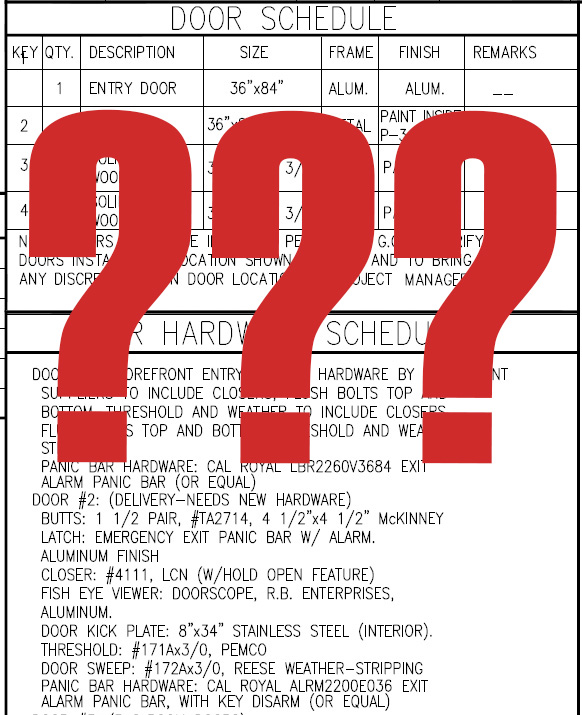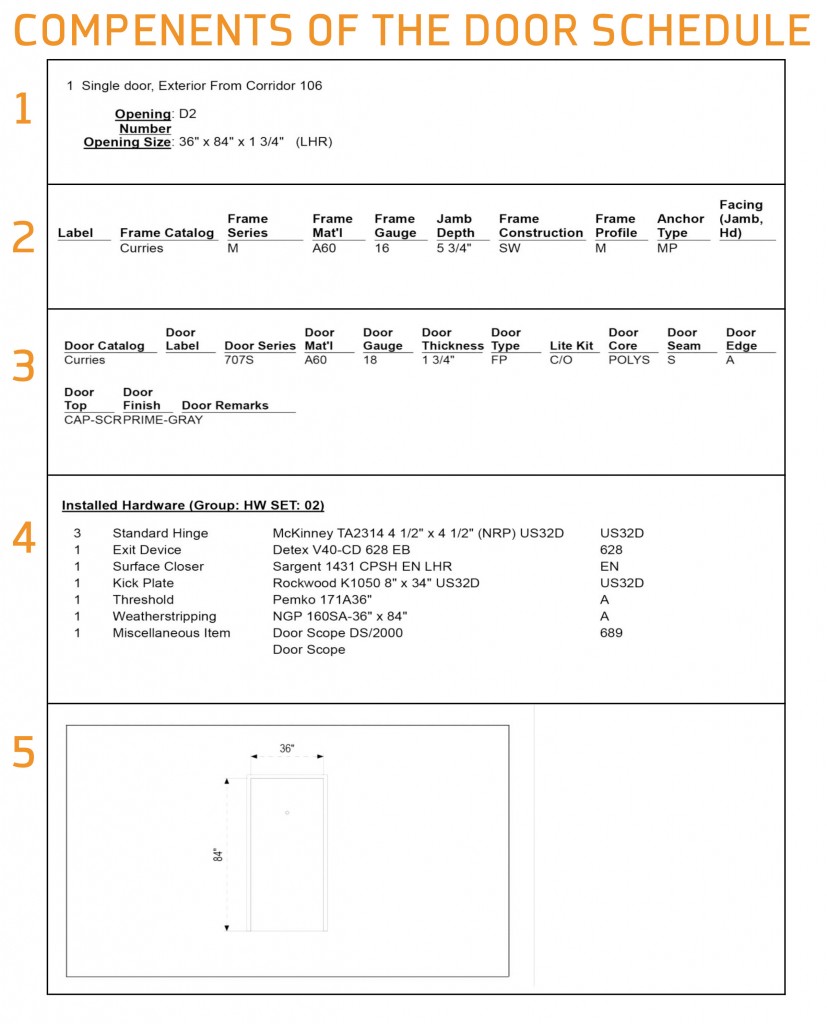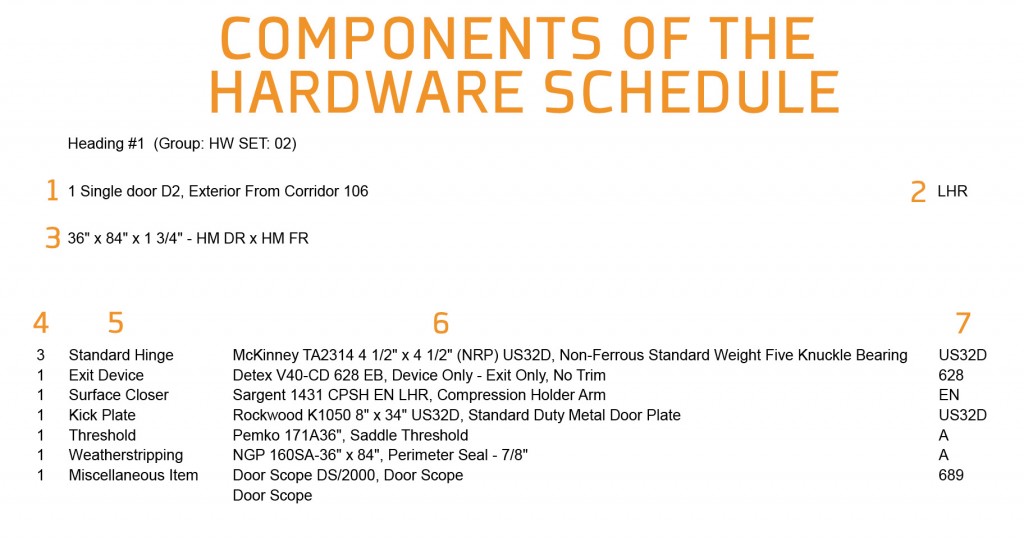How much time and money could you save by getting it right the first time?
 Your door schedule is the foundation of your facilities’ physical security – failure to get it right has a negative impact on your bottom line, schedule, and time. From national chains that employ a construction department of 50 people, to local one-man shows, we see these haphazard specifications pass our desks on a daily basis. Without thorough attention to detail your facility ends up with two closers per opening and zero hinges which will result in change orders, increased cost, and delayed schedules. Specification consultation and/or review is an invaluable resource for getting your specs right and avoiding the issues caused by improper specifications.
Your door schedule is the foundation of your facilities’ physical security – failure to get it right has a negative impact on your bottom line, schedule, and time. From national chains that employ a construction department of 50 people, to local one-man shows, we see these haphazard specifications pass our desks on a daily basis. Without thorough attention to detail your facility ends up with two closers per opening and zero hinges which will result in change orders, increased cost, and delayed schedules. Specification consultation and/or review is an invaluable resource for getting your specs right and avoiding the issues caused by improper specifications.
Depending on the opening, traffic volume, location, and of course, local code requirements, there are dozens of things to be considered when compiling a door schedule. Over the years, we have become ‘experts’ at exit/rear/delivery door functionality, so I’ll focus on how to properly specify the entire opening for this application.
The Door Schedule – What should be included?
A typical facility has at least seven openings. Entrance, Rear, Side, Storage/Utility, Women’s Restroom, Men’s Restroom, and an Office – there could be more, and sometimes less, depending on the size and function of the facility. You should have a door schedule for each opening. A complete and accurate door schedule for a rear/exit door should include each of the following:
- Location of the opening, Dimensions, and Handing
- Detailed frame type and specifications
- Detailed door type and specifications
- Hardware set to be referenced, general description of each item, and the quantity of each item.
- And finally, an architectural Drawing of Door
The Hardware Schedule – What should be included?
The hardware schedule is the place to detail specifics and quantities of each hardware piece. While some choose to outline the type of hardware required (i.e. privacy lockset), we recommend specifying the exact product you want for your facility. This should include manufacturer, model number, function options, and finish. Failure to do so leaves you at risk of receiving substandard hardware that will cause a lot of issues down the road. A complete and accurate hardware schedule will look similar to this one:
Notice this schedule includes the following components:
- Location of the opening
- Handing
- Dimensions and door/frame type
- Quantities for each item
- Item Types
- Detailed Item Specifications
- And finally, finish specifications for each item
The hardware set is specific to one customer’s requests, the functions of the facility, and the opening location/function. In order for your door and hardware schedules to most efficiently serve their purpose, this must be done for every opening.
The Impact of Incomplete Specifications
The impact of incomplete specifications has both short and long-term ramifications on your bottom line. Failure to include even one item from the door schedule spurs the following chain of events.
- The shipment is delivered to the site.
- It sits, unopened, for a week or two until the scheduled installation date.
- The site super, GC, or door technician starts opening boxes and realizes there aren’t enough hinges, or there are no closers, or there are too many locksets.
- Distressed phone calls are placed, and installation dates are pushed out.
- Change orders are requested, and an additional order is placed to be shipped overnight. (Read: you spend a lot of extra money and your turnover date rescheduled.)
While it takes a significant amount of time to put together a complete specification, the doors and hardware of your facility impact every patron and employee that enters your facility. This added time can ease the pains of change orders and delayed timelines as well as decrease the overall cost of your construction efforts. Remember, this only covers the items that should be included; it’s also important to specify hardware that is code compliant, durable to withstand the traffic of your facility, matches your overall brand image, and of course, falls within budget. I’ll discuss the effects of the incorrect specification when we’re in your inbox again in a couple of weeks. Until then, if you have any questions regarding your current door schedules or specifying in general, we’d love to help any way we can – let us know in the comments section below.
Google


